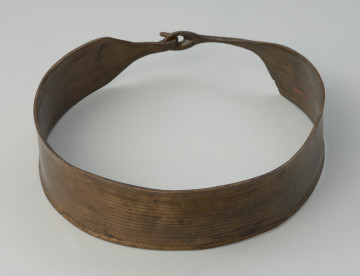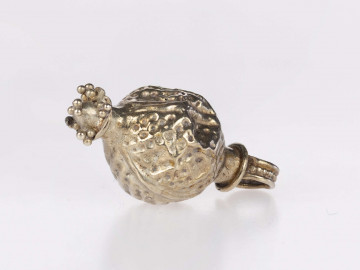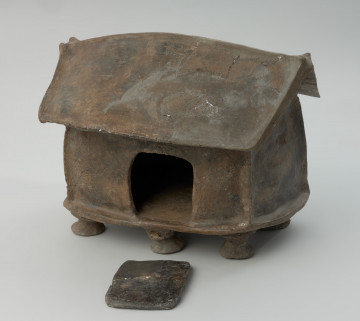
A collar necklace
around 750 p.n.e. — 550 p.n.e.
National Museum in Szczecin
Part of the collection: Bronze Age
The bronze pin, an element of furnishing from an unknown grave, was found in Przewóz, probably at the beginning of the 19th century. The object is in excellent condition, it has a notable head in the form of a spiral, twelve-coil plate made of a rectangular wire, and the tang made of a round wire. The pin should be dated to the Early Iron Age, i.e., the Hallstatt C–D period (ca. 750–450/400 BC), and is probably related to the population of the Pomeranian culture. The pins, like bracelets, were often used as grave goods. Similar items with the plate-like head from that period are being discovered in Lusatian cemeteries (like those in Silesia and Greater Poland regions), and in hoards. Pins are classified as ornaments used to fasten outer garments. The oldest items of this type started to occur in the Early Bronze Age and could be associated with the dress accessories used by the population of the Únětice culture. Such pins are distinguished by various forms of the head – from a very simple design to an exceptionally complicated one. Some pins are typical for a given cultural group; thus they may be one of the determiners for a group classification. For example, the winged pin is a feature of the Jastorf culture. Besides the most common metal pins, there are also pins made of animal bones, for example, from birds.
Monika Witek
Author / creator
Dimensions
the entire object: height: 21 cm
Object type
costium adorment
Technique
casting, bending
Material
bronze
Origin / acquisition method
legal transfer
Creation time / dating
Creation / finding place
Owner
National Museum in Szczecin
Identification number
Location / status

around 750 p.n.e. — 550 p.n.e.
National Museum in Szczecin

National Museum in Lublin

around 750 — 550
National Museum in Szczecin
DISCOVER this TOPIC
National Museum in Lublin
DISCOVER this PATH
Educational path